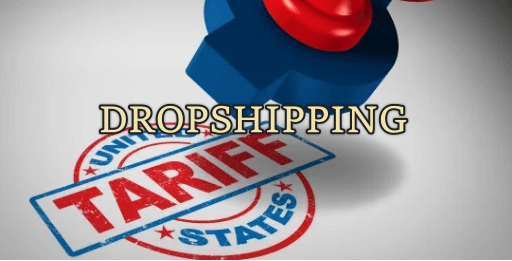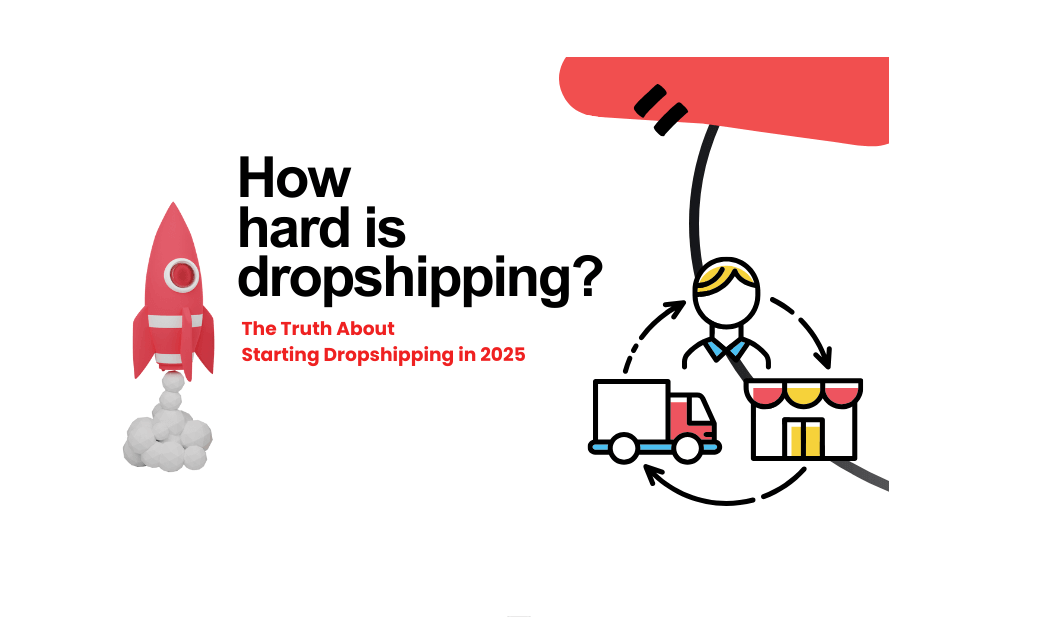These days, the majority of people prefer buying things using their phones. And this has led online retailers to sell stuff without stocking it in their own stores.
The person who buys the product from online retailers gets it straight from the company that makes it. This model is called Dropshipping.
Due to its low entry barrier and low capital requirements, it is a low-risk investment. That’s why many online retailers now dropship. According to stats, the global dropshipping market size reached $301 billion in 2024, indicating the market is highly saturated. That’s why those who want to dominate the online market are now trying the opposite: Reverse Dropshipping. So, what is it? Is it more beneficial than Traditional dropshipping? Let’s have a brief look at that!
What Is Reverse Dropshipping?
Reverse dropshipping flips the traditional dropshipping model around.
In Reverse dropshipping, retailers secure high-quality products from developed countries like the United States or the United Kingdom, with the intent of selling them in Asian regions renowned for their mass production capabilities, such as China, India, and Indonesia.
Contrary to the traditional dropshipping model, which involves exporting goods from manufacturing hubs like India and China to Western markets, reverse dropshipping takes a contrarian approach by capitalizing on quality standards and production capabilities of developed nations to meet consumer demand in Asian economies.
How Does the Reverse Dropshipping Model Work?
You won’t have trouble understanding reverse dropshipping if you’re familiar with how the traditional dropshipping model works. The only difference is that in this business model, retailers deal with expensive Western products to sell them in Asian markets.
Here’s a detailed overview of how the reverse dropshipping model works:
- Sellers pick products and advertise them on their website
- A buyer sees the advertisement and purchases the product
- The seller notifies the manufacturer that a sale has been made
- The manufacturer ships the product directly to the buyer
- The buyer pays the seller
- The seller pays the manufacturer their share and retains the profit
Pros and Cons of Reverse Dropshipping
Reverse dropshipping opens doors to new markets and growing customer numbers. However, like any business model, it has its own pros and cons. When you understand these, you will be able to make wise decisions about its fit for your company.
Pros
- Less Competition: Not many people have adopted the concept of reverse dropshipping just yet. So, being an early adopter means facing fewer rivals selling similar products through the same channels. This gives a competitive edge.
- Higher Profit Margins: If you source products from countries, where manufacturing costs are low and sell them in high-purchasing areas, you can achieve higher profit margins.
- Unique Product Offerings: You may offer products that are not available in any other store.
- Flexibility in Pricing: With Reverse Dropshipping, you have the most control over pricing. So, you can set your own prices based on your costs and market demand. This gives you more flexibility and control over your profit margins compared to traditional dropshipping models.
- Brand Building: Since you’re sourcing products directly, you have the opportunity to build a unique brand identity. You can curate a selection of products that align with your brand values and establish a stronger connection with your customers.
Cons
- Complex Supply Chain Management: Reverse Dropshipping requires businesses to establish relationships with suppliers in different countries. Managing such a complex supply chain can be challenging and time-consuming.
- Shipping Times and Costs: Since products are shipped from the destination country, reverse dropshipping may result in longer shipping times and higher shipping costs compared to traditional dropshipping.
- Risk of Fraud: Dealing with overseas suppliers increases the risk of fraud. It’s important for businesses to conduct thorough research on potential suppliers and establish strong contractual agreements to protect themselves against fraud.
- Limited Supplier Options: Finding reliable suppliers in other countries can be challenging. This may limit the variety of products that businesses can offer through reverse dropshipping.
- Customer Service Challenges: It requires a lot of resources to work effectively over several time zones and different languages.
Is Reverse Dropshipping Harder Than Traditional Dropshipping?
The short answer is YES. Reverse dropshipping can be much more difficult than traditional dropshipping. Here are the main reasons why:
- You will be required to comply with stringent manufacturers’ standards and trade rules.
- The logistics of shipping from nations with greater manufacturing costs can complicate pricing strategies and customer service expectations.
However, you also need to know that reverse dropshipping may also provide significant advantages. With less competition for certain products in established markets and higher wholesale pricing – the potential for greater earnings exists!
How to Start Reverse Dropshipping
Here’s a step-by-step process for starting a reverse dropshipping business:
- Step 1). Identify Your Market: Research and select a target market that has a demand for premium products not readily available locally.
- Step 2). Legal Considerations: Understand and comply with the legal requirements of both the source and target countries.
- Step 3). Choose Suppliers: Partner with reliable suppliers who offer high-quality products and can ensure timely delivery.
- Step 4). Store Setup: Create an online store that caters to your target audience, ensuring it’s user-friendly and accessible.
- Step 5). Localize Content: Translate your store’s content to resonate with the local market and culture.
- Step 6). Marketing Strategy: Develop a robust marketing plan that includes SEO, social media, and influencer collaborations to reach potential customers effectively.
By following these steps, you can establish a successful reverse dropshipping business that meets the needs of a specific consumer base looking for quality and exclusivity.
How to Choose Profitable Reverse Dropshipping Products
Choosing the right products is as important in reverse dropshipping as choosing the right reverse dropshipping platform. The goal is to find items that aren’t only in demand but also offer good profit margins. And cater to the needs of consumers in less developed markets. Here are some tips and examples of profitable reverse dropshipping products:
1). Organic Beauty Products
As awareness of health and wellness grows, organic and natural beauty products are in demand. They promise quality and safety, attracting a market willing to pay a premium for these benefits.
2). Smart Home Devices
With the rise of IoT, smart home devices like thermostats, lighting systems, and security cameras are increasingly popular. They offer convenience and energy savings, appealing to eco-conscious consumers.
3). Fitness Trackers
These gadgets have become a staple for health enthusiasts. They track activity levels, sleep patterns, and more, making them a profitable niche with a broad consumer base.
4). High-End Fashion Accessories
Luxury items like designer handbags and watches are sought after for their brand value and quality. They are especially popular among consumers looking to own premium products from Western markets.
5). Gaming Consoles
The gaming industry is booming, and consoles are at its core. They offer entertainment and social interaction, making them a profitable choice for reverse dropshipping.
When selecting products, consider the following FACTORS:
- Profitability: Look for items with high perceived value that can be sourced at a lower cost.
- Market Demand: Research the target market to ensure there’s a demand for the products you select.
- Trends: Stay updated on emerging trends to keep your product offerings relevant.
- Product Features: Opt for products with unique features that set them apart from local offerings.
By focusing on these aspects, you can curate a selection of reverse dropshipping products that are likely to resonate with consumers and drive sales. Remember, the key is to offer quality and exclusivity that can’t be found in local markets.
How to Boost Reverse Dropshipping Business
Achieving success in reverse dropshipping relies on engaging your target audience and effectively promoting your products. By using the right marketing strategies, you can significantly boost your business’s visibility, drive sales, and foster long-term growth.
Here are some proven techniques to take your reverse dropshipping venture to new heights:
- Take advantage of the power of advertising: Strategically place ads on platforms where your potential customers spend their time, such as social media, search engines, or relevant online communities. Dropshipman’s robust integration with powerful marketing apps like SEOAnt and EcomSend empowers you to optimize your advertising campaigns, enhance your online visibility, and reach your ideal customers effortlessly.
- Invest in email marketing: Build an engaged email list and nurture relationships with your subscribers through targeted campaigns, promotional offers, and valuable content. Dropshipman’s seamless integration with email marketing tools allows you to streamline your communication efforts and build lasting connections with your customers.
- Conduct keyword research: Identify the most relevant and popular keywords in your niche to optimize your product listings, website content, and advertising campaigns. By aligning your offerings with customer search trends, you can significantly improve your discoverability and attract qualified traffic to your store.
- Collaborate with influencers: Partner with influential individuals or brands in your industry to tap into their loyal following and leverage their credibility. Influencer marketing can amplify your reach, boost brand awareness, and drive substantial sales for your reverse dropshipping business.
- Offer exceptional customer service: In the competitive world of e-commerce, providing outstanding customer support can set you apart from the competition.
By combining these powerful marketing strategies with Dropshipman’s robust features and integrations, you can push your reverse dropshipping business to new heights and drive sustainable growth in the competitive e-commerce landscape.
Conclusion
Reverse dropshipping stands out as a relatively new business model, providing a fresh opportunity since it’s less known and faces fewer competitors compared to traditional dropshipping. While managing a complex supply chain remains a challenge, the potential for higher profit margins makes reverse dropshipping a compelling option. If you have any questions related to Reverse Dropshipping or how Dropshipman can help you with it – let us know. We will be more than happy to help you out with your confusion!

![Dropshipping General Store vs. Niche Store [2025 Data and Table]](https://www.dropshipman.com/wp-content/uploads/2025/03/general-vs-niche-store.png)


